Films and videos
Before the dawn, hope keeps stubborn watch
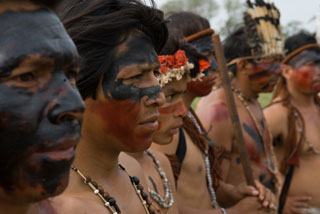
La Terre des hommes rouges
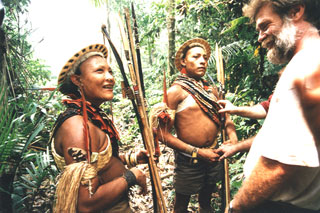
Corumbiara, they shoot Indians don't they
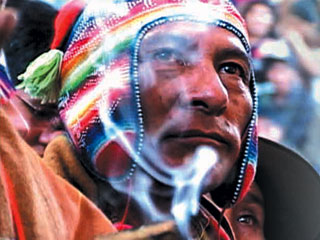
Suma Qamana, Sunak, KausayTeko Kari (For a Better Life)
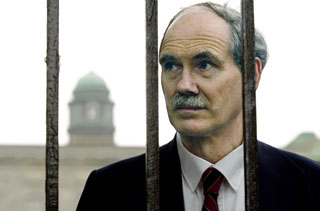
Depuis quand ressent-on l'obligation de répondre
correctement au lieu de répondre honnêtement ?
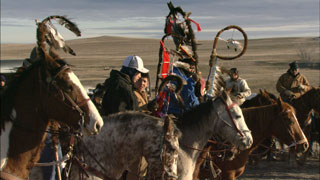
No More Smoke Signals
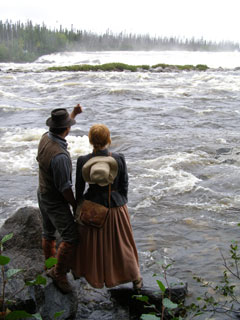
The Last Explorer
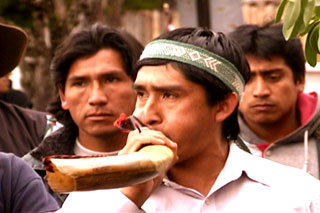
El Juicio de Pascal Pichun

Acteal, diez anos de impunidad
Somewhere between darkest despair and the luminous side of life, stories take shape. They speak of ancient days, epic struggles, massacres and thousands of deaths. But after a long, hard road, they celebrate a birth.
La Terre des hommes rouges, the film chosen to open First Peoples' Festival's 2009 selection, recounts the slow death of the Guaranis exiled and outcast in Southwestern Brazil, in the face of non-Native settlement and systematic clearcutting of the forest. Sometimes young people prefer ending it all to their people's agonisingly slow death. But their nation's chiefs offer them struggle as an alternative. Despite the death squads lashing out at the very heart of their resistance, we will see the emergence of a new leader when Oswaldo, the apprentice shaman, finally takes wing.
This is a timely fictional scenario, based on very contemporary events. A case in point, in its Canadian premiere screening, is Corumbiara, they shoot Indians don't they?, the most recent film by Vincent Carelli, the man who spearheaded the Vidéo nas Aldeias project (a Brazilian equivalent to the Wapikoni Mobile project). Here, the man who has fostered expression of the Indigenous voice of his country via video, reveals another facet of his grass-roots work (and, atypically, speaks in the first person). In Brazilian courts, filmed documents can constitute evidence to secure the decree of so-called "ethno-environmental" protected zones, by proving that Indian communities live in these territories. However these Indians, victims of massacres and exactions, systematically hide from outsiders. This sparked off a veritable hunt for fugitives involving the filmmaker and his crew - a manhunt ironically aimed at the group's survival, by making contact with them. They faced the naked hostility of major landowners who wanted to take over the original inhabitants' lands and who had lain plans to exterminate them on the sly. This case of extreme filming for legal purposes provides us some of the most hard-hitting scenes in the history of documentary cinema, through this tense relation between the subject (humans in peril of death) and the camera hunting them down tirelessly… to save them. And the film concludes with the image of a woman singing a lullaby to her child in a language listed in the catalogue of extinct languages in the scholarly libraries of Brasilia and Rio.
Another birth story, L'éveil du pouvoir provides a forum for contemporary Aboriginal leaders (including AFNQL Chief Ghislain Picard) who attended Manitou College at La Macaza in the flowering of their youth. Although their alma mater was shut down, the hope that caught fire back then endures in the contemporary affirmation of First Peoples and the presence on the political scene of leaders who discovered their vocation in the process. Over in New Brunswick, an Acadian painter sets out to meet Mi'gmaq and Malecite chiefs. This meeting led to a story of staunch friendship which we have the privilege of viewing in Donald McGraw et le Cercle des chefs.
If in Humiliados y Ofendidos, we observe the degrading attacks inflicted on Bolivian Aboriginal people during riots fomented by the rightwing in Sucre, Suma Qamana, Sumak Kausay, Teko Kavi (For a Better Life) sets these events in the long march ongoing in Bolivia towards the instauration of meaningful democracy. After Evo Morales' election, this led to the adoption of a new constitution, finally restoring the First Nations' rightful place.
The dark side is massacres and exodus; the luminous face is empowerment. And getting from one to the other involves a decisive meeting with a master or teaching institution culminating in a decisive turning point in an individual's life.
Alanis Obomsawin, the quintessential Indigenous filmmaker, has turned her sights to describe the passionate career of an extraordinary teacher able to seed hope for a better future in the very practice of his profession in Professor Norman Cornett: Depuis quand ressent-on l'obligation de répondre correctement au lieu de répondre honnêtement?, presented in a Montreal premiere.
On a similar subject, Sikuelachi, a short set in a school in rural Mexico, describes a joyful reality. This seems at odds with the lives of the children (most of them Indian or Mestizo) who work in Mexico's horticultural plantations: a shameful reality unsentimentally portrayed in two documentaries, Los Herederos and Paying the Price.
On the Pine Ridge Reservation, community radio is the way young people affirm themselves and discover who they are. On a shoestring budget, the hosts of Kili Radio "the voice of the Lakota Nation" manage to get their work done with an unshakeable faith in their mission. No More Smoke Signals plunges us into the reality of one of the poorest reservations in the United States (in economic terms), where young people are seeking a future.
So these stories are told. And in their very telling, they wind up writing another story, the History of the First Peoples, all too often rejected and forgotten by official history.
In The Last Explorer, director Neil Diamond has embarked on an investigative endeavour to bring to light the true story of a Cree man who was the guide for several famous Northern explorers. The film is an example of this well-known truth that sometimes reality is stranger than the fiction based on it.
Another documentary, El Juicio de Pascal Pichun takes us through the ins and outs of Chilean justice still mired down in Pinochet's laws. Under pressure from a major landowner, a Mapuche leader who dared speak out for territorial rights is accused of terrorism. The scenes filmed in the courtroom itself are absolutely incredible (making us regret that it is impossible to film in courts of law in Canada).
Acteal, diez anos de impunidad, filmed in Mexico by a Tzotzil filmmaker, also tells the story of an infamous massacre whose authors have never been prosecuted, not even for terrorism (which would have fit the bill in that case!)
Wounded Knee takes us back to the site of the infamous 1890 massacre to tell us the more recent history of the site's 1973 occupation by Lakota traditionalists with the support of American Indian Movement activists. This occupation saw the emergence of a new consciousness among Aboriginal peoples of America through the ups and downs of the struggle for recognition of their rights.
A desolate shack where an old Maori woman and her sick son eke out a miserable living is the starting point for is the starting point for New Zealander director Vincent Ward who discovers an entire chapter in the history of his country which he sets forth in all its tragic grandeur in Rain of the Children.
On the fictional side, The Only Good Indian revisits the Western by telling the story of a young fugitive from a residential school and those who are hunting him down: a bounty hunter who is Amerindian himself (Wes Studi) and a cowboy with more disturbing aims.
And other voices are raised, tirelessly telling the tales and taking up the words of the dreams sketched out by earlier generations of storytellers.
An Aborigine women from the Australia backcountry dreams of becoming an actress like her idol... Marilyn Monroe, in River of No Return. An angry young Guarani man speaks out against his people's marginalization in Brazil, in a documentary Two Villages, One Path>, which could be seen as a documentary counterpart to La Terre des hommes rouges, also on this year's roster.
Here, as in Brazil, restless youth, uncertain of their future (Entre l’arbre et l’écorce), hook up to their Elders’ knowledge for the survival of languages (Finding our talk: Anishinabe; Finding Our Talk: Mi’gmaq) and for values to continue being passed down (360 degrés; Mon père, cet artiste).
And these new voices join forces and build links: local young Aboriginals have met other young people from the First Nations of the Americas (see on this subject the lovely Des forêts de Kitcisakik aux forêts de Xingû by Evelyne Papatie). In this way, First Peoples’ Festival 2009 plays a part in the convergence of a renaissance of cultures battered by history but that gain new life in the effervescence of a new century, announcing big changes to come














